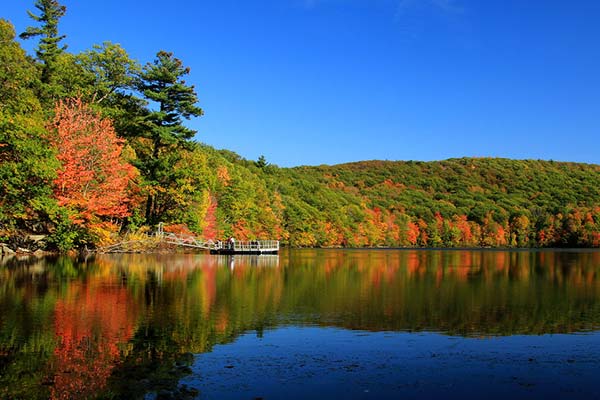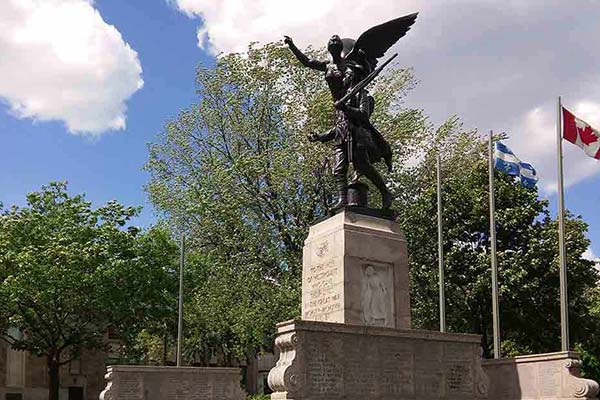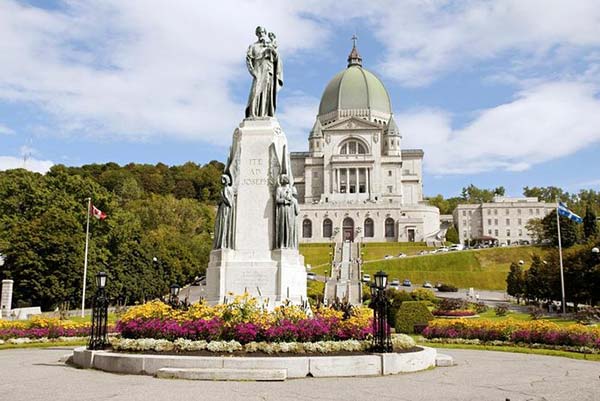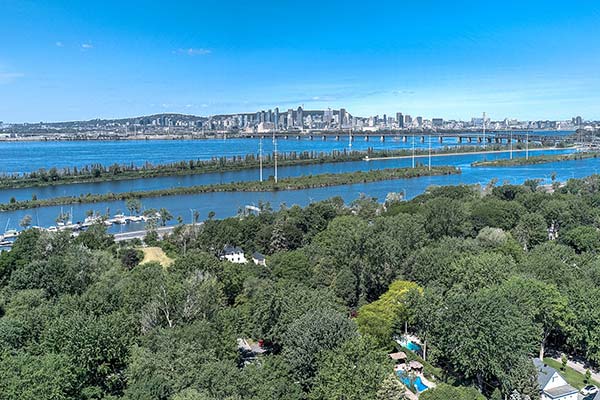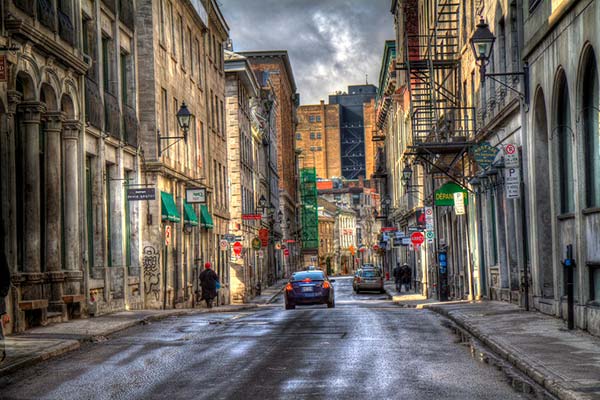Quebec is the largest Canadian province by land area, so of course, it provides many options for where to live. The gorgeous landscape varies from mountains to shores, but geography is just one factor in choosing the best cities to live in Quebec.
Great arts and culture, a thriving economy, and an affordable cost of living are just a few of the reasons so many people call Quebec home. The cities on this list cluster around Montreal, where residents can take advantage of big-city life while enjoying the community feel of the smaller cities they live in.
Here are five of our favourites that are some of the best places in Quebec to call home.
1. Saint-Bruno-De-Montarville
This vibrant Montreal suburb sits on the south bank of the Saint Lawrence River. It’s a popular location for Montrealers thanks to its location at the foot of Mont Saint-Bruno, home to a ski resort, national park, and spa.
The average age of the population is 46.1, slightly older than the rest of Quebec, with education, health, and social services being the largest employment sectors. Around 85 percent claim French as their mother tongue and speak it most often at home. The average house price is still below $400,000, which contributes to an 87 percent homeownership rate.
Summers are long with high temperatures around 26 degrees celsius and rarely rise above 30. Winters are less pleasant, with freezing, snowy, and windy conditions and can get to -30 degrees celsius.
- Population: 26,974
- Average Household Income: $106,066
- Average Home Price: Depending on the neighbourhood, homes typically range from $629,000 - $1,389,000
- Unemployment Rate: 2.7%
- Crime Rate: 1.5%
2. Westmount
Surrounded by Montreal, Westmount has historically been a wealthy anglophone enclave and is located at the centre of the Island of Montreal. At one point, it was the richest community in Canada and is still one of the more expensive places to live in the province. The cost of living is 60 percent higher than the rest of Quebec.
The enclave is the home to two Canadian Forces Primary Reserve units and boasts an arena, pool, and an assortment of parks. The 4 sq km town is largely residential, which contributes to the community feel, and features distinctive architecture. It sits on the south face of the southern peak of Mount Royal.
The city is still predominantly made up of English speakers with 70 percent speaking English as their first language and 76 percent bilingual.
Westmount has a much higher percentage of married couples with 74 percent, and the population’s average age is 46.
Summers are long with high temperatures around 26 degrees celsius and rarely top 30. Winters are less pleasant, with freezing, snowy, and windy conditions and can get to -12C.
- Population: 21,219
- Average Household Income: $109,019
- Average Home Price: Ranging from $399,000 - $6,200,000
- Unemployment Rate: 4%
- Crime Rate: .78%
3. Mont-Royal
At the center of Montreal Island sits the enclave of Mont-Royal. The garden city is full of green space and sits on the northwest side of Mount Royal, a great place for a bike ride.
The city was named a National Historic Site of Canada in 2008 and features lots of examples of great architecture. Until the 1960s, anglophone was the majority.
More than half the families in town have children under 18, and more than 70 percent are married couples. The average age is slightly lower than the other cities in Quebec listed here at 42.
The city has a 33 percent higher cost of living than the rest of Quebec, which reflects the fact that real estate prices are 135 percent higher than the average.
Summers are long and warm with high temperatures around 26C and rarely above 30C. Winters are less pleasant, with freezing, snowy, and windy conditions and can get to -13C.
- Population: 21,961
- Average Household Income: $118,728
- Average Home Price: Varies depending on neighbourhood. Typically ranging from $425,000 - $1,700,000
- Unemployment Rate: 4%
- Crime Rate: .78%
4. Saint-Lambert
Also on the south shore of the Saint Lawrence River sits Saint-Lambert. It was an anglophone-majority community for most of its history, although that changed in the late 20th century as upper-class francophone families moved into the area.
The population is a little older than other cities with an average age of almost 50, which accounts for the fact that only 41 percent of families have children under the age of 18.
Most of the commercial activity is known as the Village and is home to the flagship store of Taylor’s.
One of the appealing features is that the cost of living is 16 percent less than the Canadian average.
The city has abundant rainfall and one of the longest growing seasons in Quebec. There are long spells of hot, humid weather in summer and heavy snowfall in winter. Summer temperatures reach highs of 25C and rarely get to more than 30C. Winter lows can get to 2C and rarely drop below -3C.
- Population: 29,879
- Average Household Income: $84,211
- Average Home Price: Ranging from $425,000 - $3,798,000
- Unemployment Rate: 3%
- Crime Rate: 1.6%
5. Boucherville
Another Montreal suburb on the south shore of Saint Lawrence River, Boucherville is a busy and exciting town. It was founded in 1667, but only became a city in 1957. It has an industrial park that covers 7 sq km with 575 businesses that employ more than 23,000 people.
This city appeals to residents thanks to its low property taxes and a cost-of-living that is 20 percent lower than the Canadian average. The average age is around 47, and only 42 percent of families have children under 18.
More than 90 percent of residents claim French as their first language, which explains why there is only one English-language primary school and has never been an English-language high school in the town.
Summers are long and warm with high temperatures around 26C and rarely above 30C. Winters are less pleasant, with freezing, snowy, and windy conditions and can get to -13C.
- Population: 42,787
- Average Household Income: $102,374
- Average Home Price: Varies by neighbourhood. $589,900 - $749,000
- Unemployment Rate: 3%
- Crime Rate: 1.6%
No Question: The Best Cities to Live in Quebec
Whether you prioritize low crime rates or a vibrant arts culture, the best cities to live in Quebec offer great options for young families and retirees. The cities we’ve chosen here appeal thanks to their lower cost of living and range of recreational options.
If you’re moving to Quebec, be sure to check out our mortgage comparison page. Insurdinary can help you find the best rate when you buy your new home in one of our great Quebec neighbourhoods.


